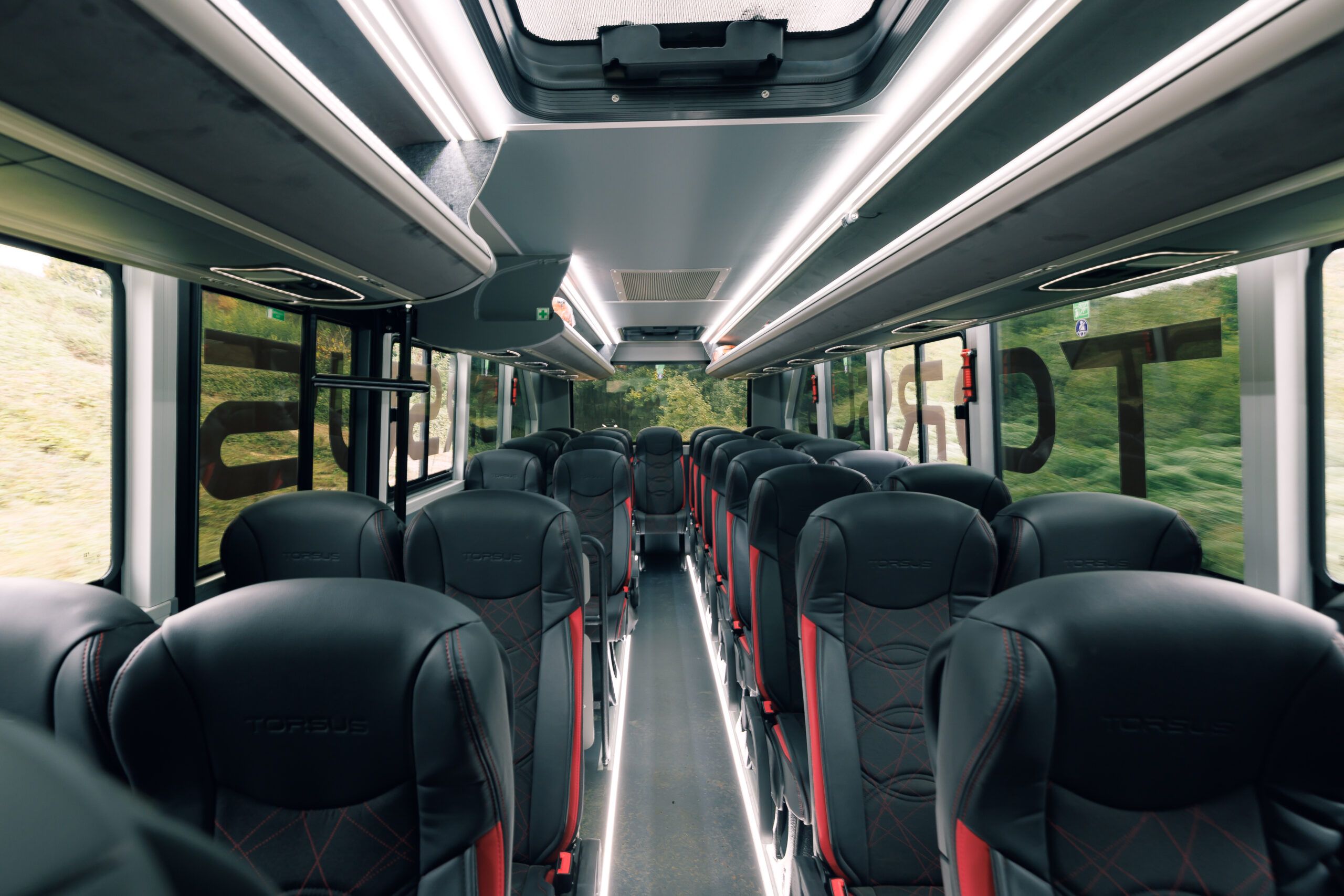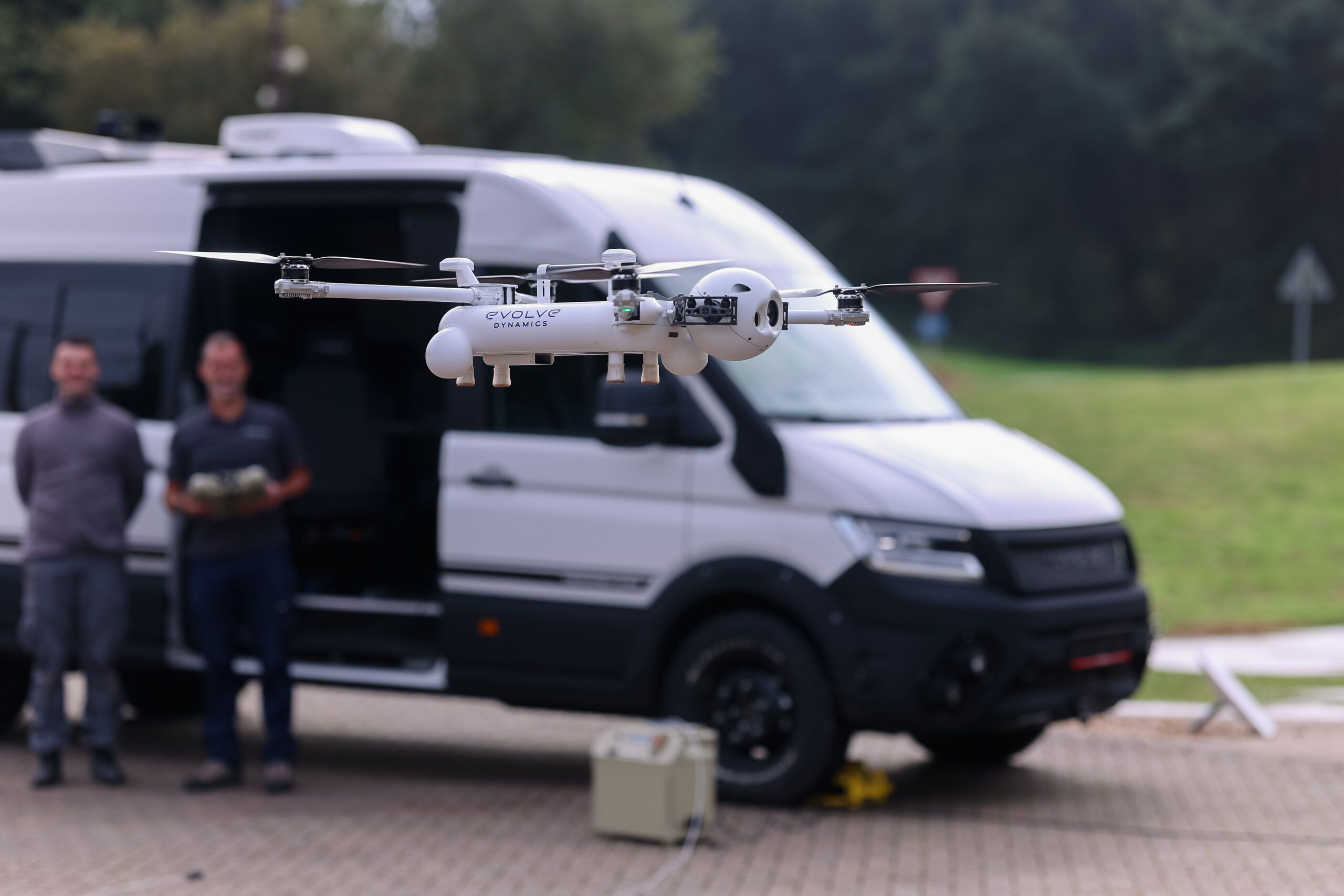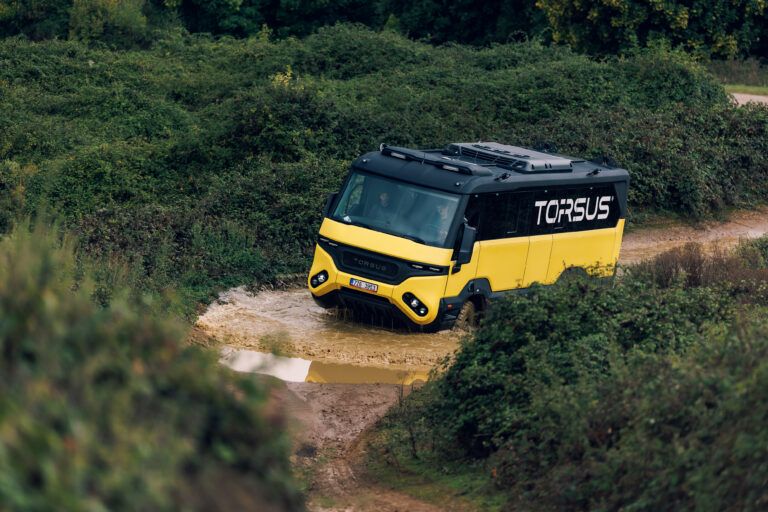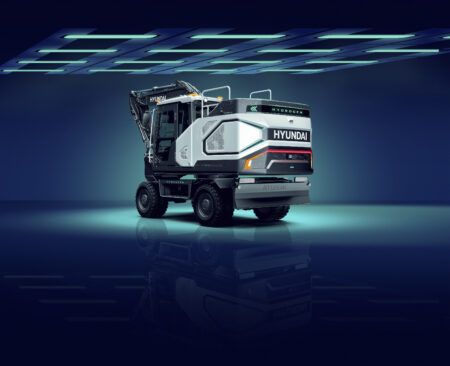Czech manufacturer, Torsus builds the world’s toughest heavy-duty off-road buses, designed to combine durability, optimal efficiency and comfort in every working condition
Founded in 2017, Torsus is the off-road vehicle brand of Pulsar Expo. Headquartered in the Czech Republic, the company specialises in the design and development of vehicles for particularly harsh and challenging environments. After seven years since its flagship off-road bus was revealed, the Torsus Praetorian is now in its third generation.
After speaking with potential customers in the mining industry and law enforcement, the company realised comfortable off-road transport for several passengers was a segment that was not being catered for. “Historically, we delivered a lot of vehicles under international technical aid programs,” says Torsus CEO, Vakhtang Dzhukashvili. “We saw that these trucks were carrying people but were not very comfortable for passengers in harsh conditions.”
Development of the Torsus Praetorian began in 2014 before the first generation was revealed in 2017. Inspired by the Imperial Roman army’s Praetorian Guard, the bus’s name is a nod to the elite protectors of Roman emperors. “Every Torsus Praetorian is designed to shrug off water, mud, gravel, dust, sand, snow, ice and virtually anything nature cares to throw at it,” adds Dzhukashvili.
A vehicle for every condition
The bus is available in a standard specification and a Minesite version with additional equipment for safe operation in and around mining locations. The bus can carry up to 34 passengers in the rear compartment and an additional passenger next to the driver. While it looks like a bus from the outside, it is underpinned by an MAN TGM truck chassis. The permanent four-wheel drive set up is powered by a 6.9-litre six-cylinder diesel MAN engine. Power is rated to 290hp and maximum torque is 1,150Nm between 1,200 to 1,750rpm. It is paired with an MAN 12-speed Tipmatic ZF AStronic transmission and sits on 20in wheels with Michelin XZL tires.
Designed for off-roading in all conditions, the bus has a ground clearance of 350mm and a fording depth of 680mm. In the event the vehicle gets stuck, or more likely it needs to rescue something else; it has a 30m 12-tonne winch mounted at the front. The spare wheel at the back also has a winch to make it easier to mount or dismount. Its approach angle is 28 degrees and it has a departure angle of 22 degrees. Praetorian can tackle 65% gradients and drive sideways along slopes up to 33.5% without rolling over.
Unlike a typical truck or bus, the Praetorian has a steel skeleton that not only forms the basis for the bodywork to sit on but provides rollover protection. The skeleton structure is built at MAN’s factory in Starachowice, Poland. Once the structure is welded together, it undergoes cataphoretic painting, then varnish and a final coat of paint to protect it from corrosion. With fibreglass body panels on top which are covered in a polyurea coating, the vehicle can operate in extremely salty environments with minimal risk of rust. It features polycarbonate windows which are covered with metal mesh protection for the Minestite variant and extra roof lights to illuminate terrain in low light.
Since the Praetorian has already entered operation in Spain, Germany and Ukraine, Torsus is gaining insights from its customers to inform improvements in the design. “Following feedback from our customers around the globe and a 20-month research and development programme, we have added a complete front air-suspension assembly between the chassis and the superstructure for the first time. This provides a higher level of compensation for the weight of the front portion of the superstructure and gives the Torsus even greater control, composure and safety, no matter how rough the terrain gets,” says Tomas Micuda, Torsus technical manager.
He also explains the team has introduced an algorithm to support the vehicle to cope with its high centre of gravity. The technology is designed to make it easier for the driver and reduces the top-heavy feel of the vehicle. This generation features what Torsus calls silent blocks which sit between the chassis and structure. These semi-spherical rubber cushions were created to reduce noise and vibration in the cabin and improve the passenger experience.
As the Praetorian is based on MAN architecture, customers can access the MAN dealer network for servicing and repairs. Praetorian also comes with a six-year or 900,000km drivetrain warranty as standard. To optimise servicing access, Torsus has increased the opening of the front bonnet by around 30cm. A double latch system was also introduced along with additional centre pins to keep it securely closed over uneven or challenging terrain. “We’re well aware that many of our buses never get to see a tarmac road again once they start their working lives, never mind getting parked up in an immaculate bus garage every night. That thinking was very much to the fore when we redesigned and rebuilt the Praetorian’s front mask,” says Dzhukashvili.

Off-road and on-road use
For operators that will use the vehicle on-road as well, the bus has several different driving modes including an efficiency mode to optimise fuel economy and comfort. For off-roading, it is best with off-road and low-range modes engaged. It also has better control using the manual function and selecting the right gear for the scenario. Over loose or slippery surfaces, handling is supported by two locking differentials which can easily be locked at the turn of a dial. With both differentials engaged, the turning circle suffers slightly but they can easily be switched off for tight corners.
Inside, drivers who are familiar with MAN trucks will feel at home as the dash and steering wheel are from MAN. The switches below the screen have been altered slightly to operate the vehicle’s off-road functions. The passenger compartment looks virtually unchanged from a standard coach. As the floor at the front of the vehicle is lifted slightly to house the engine and drivetrain beneath, passengers enter from the side door. Since the bus is much higher than a typical passenger vehicle, it has an additional step which automatically slides out to reduce the step up into the bus. Operators can choose from up to 14 different seating configurations and specify seats with either three- or five-point belts.
For operation off-road, rules for the land the vehicle is operating on will dictate what licensing is required but for on-road driving the relevant bus license for the country is required. As the vehicle is based on a truck chassis, drivers who have HGV licenses for rigid vehicles will find the bus fairly easy to get used to. Praetorian has a GVW up to 13.4-tonne, accounting for a 3.4-tonne payload.
Torsus Terrastorm
Torsus has also developed a smaller off-road people carrier, the Terrastorm. Based on the Volkswagen Crafter / MAN TGE chassis, it can be specified with up to 17 passenger seats. Just like the Praetorian range, Terrastorm can be had in a mining specification. The four-wheel drive minibus includes a snorkel, electric winch, steel and aluminium underbody protection and metal light protection. The lower part of the body is protected by a polyurea coating which prevents scratches, dents, rust and stains. As well as being suited to harsh environments, the Terrastorm Minesite adds external metal mesh window protection. The metal sheet over the windscreen slides up and down to optimise visibility as required. This is designed to protect the vehicle and its occupants in environments where there might be falling debris or loose earth.
The Terrastorm is equipped with a 2.0-litre diesel engine with 177hp and 410Nm of torque. It can be paired with either a six-speed manual transmission or eight-speed automatic gearbox. Four-wheel drive is standard and it comes with a rear locking differential. For off-road or rescue applications, it has a fording depth of 690mm which can be increased to 820mm. Terrastorm has a GTW of 6-tonne and can tow a braked trailer up to 3-tonne. Extra cargo or equipment can be stored on the roof rack which can take up to 150kg. Terrastorm can also be specified as an off-road ambulance or a cargo unit. It has a ground clearance of 250mm and comes with the H3 height body as standard. The vehicle has an approach angle of 26 degrees and a departure angle of 20 degrees. The benefit of it being based on the shared Volkswagen and MAN chassis is it can be serviced through the Volkswagen and MAN dealer network. Terrastorm comes with a two-year unlimited mileage warranty.
As well as being suited for off-road environments, Torsus has strategically partnered with Evolve Dynamics to showcase potential applications for the Terrastorm. Evolve Dynamics specialises in unmanned aerial vehicle (UAV) technology and has kitted out a Terrastorm van as a surveillance vehicle. Its Sky Mantis 2 drone can be operated either with a tether for up to 48 hours or an hour on battery power alone. The tether can be dropped, and the drone can fly for up to 30 minutes after disconnecting.

While it can be used for law enforcement or military applications, it is also suited to the mining industry. The drone’s modular design means it can be equipped with various sensors and cameras. A high-resolution camera can be used for imaging, mapping and surveying mine sites and potentially unstable areas where it would be difficult or unsafe to access in a vehicle or on foot. Sky Mantis 2 can be paired with an optical gas imaging scanner to detect hazards and ensure site safety. Additional sensor capabilities include medium wave or long wave infrared thermal imaging, and a corona solar blind UV camera. The device has been tested for extreme temperatures and can operate from -30°C to 50°C in wind speeds up to 46mph and heavy rain.
This article first appeared in iVT’s 2025 Off-Highway Annual





